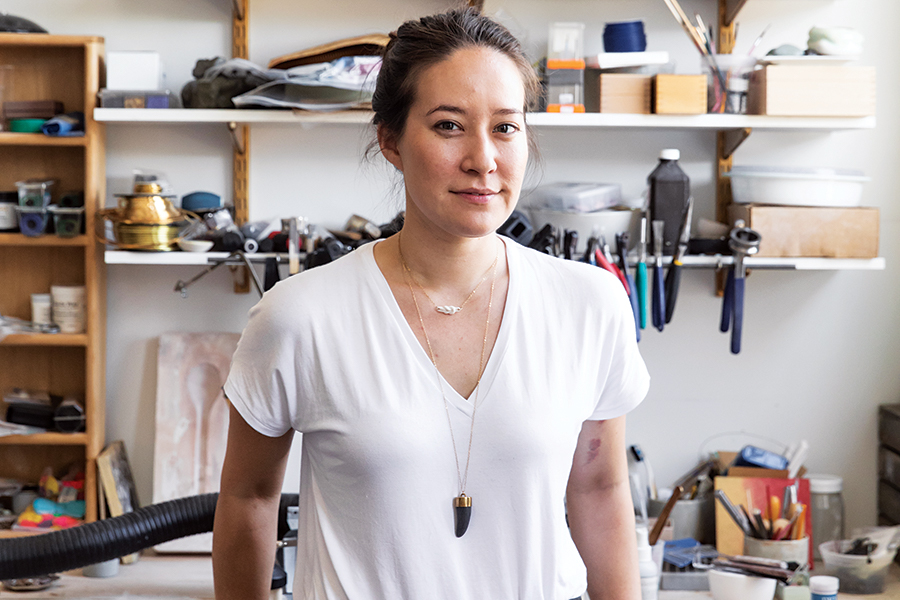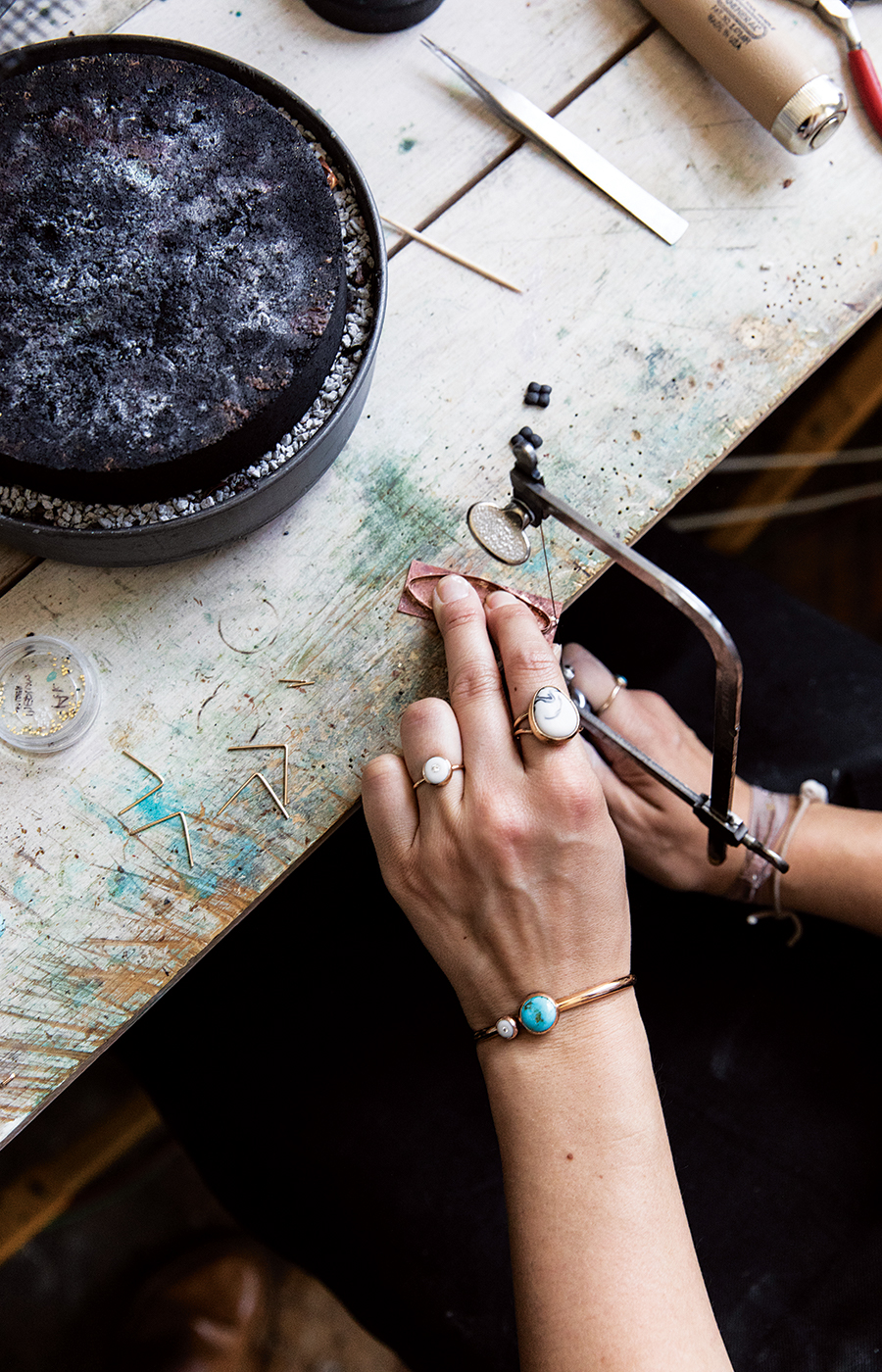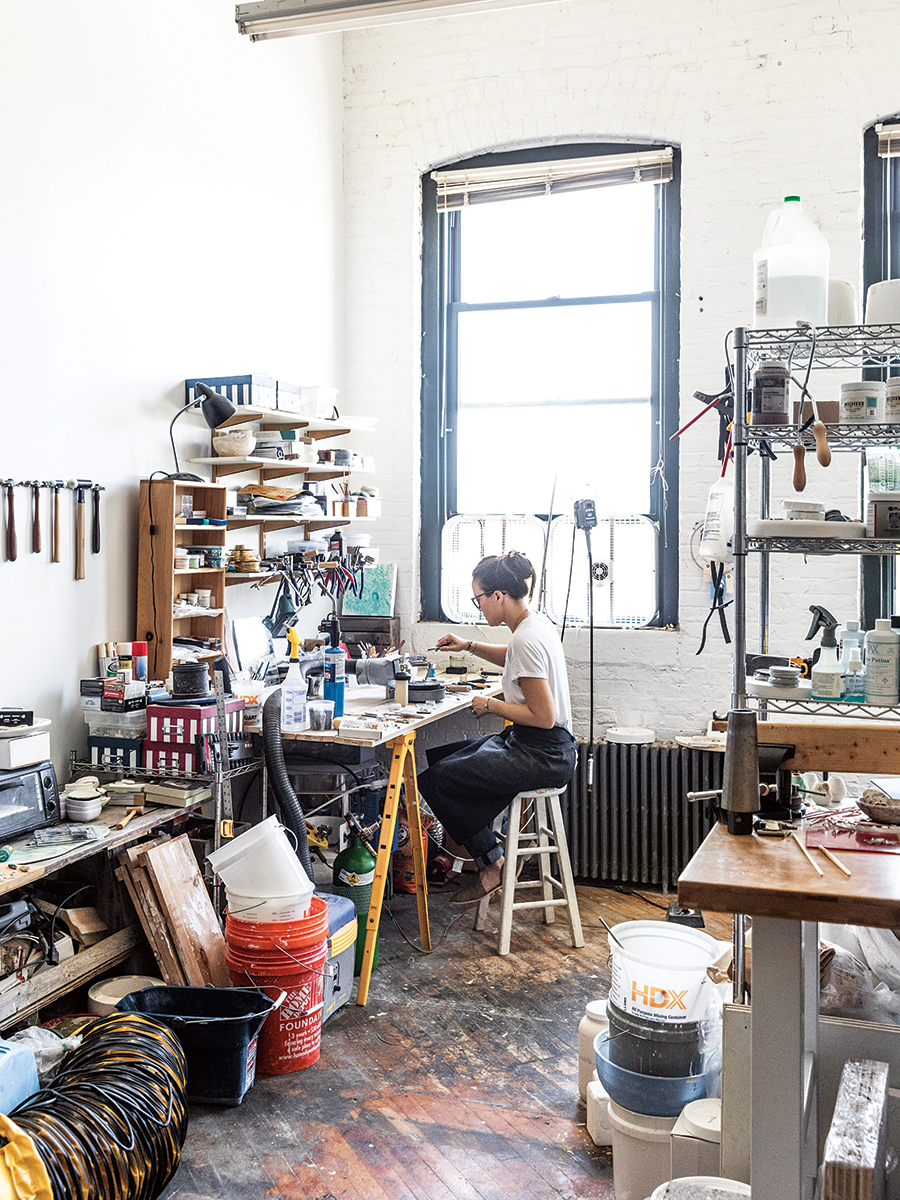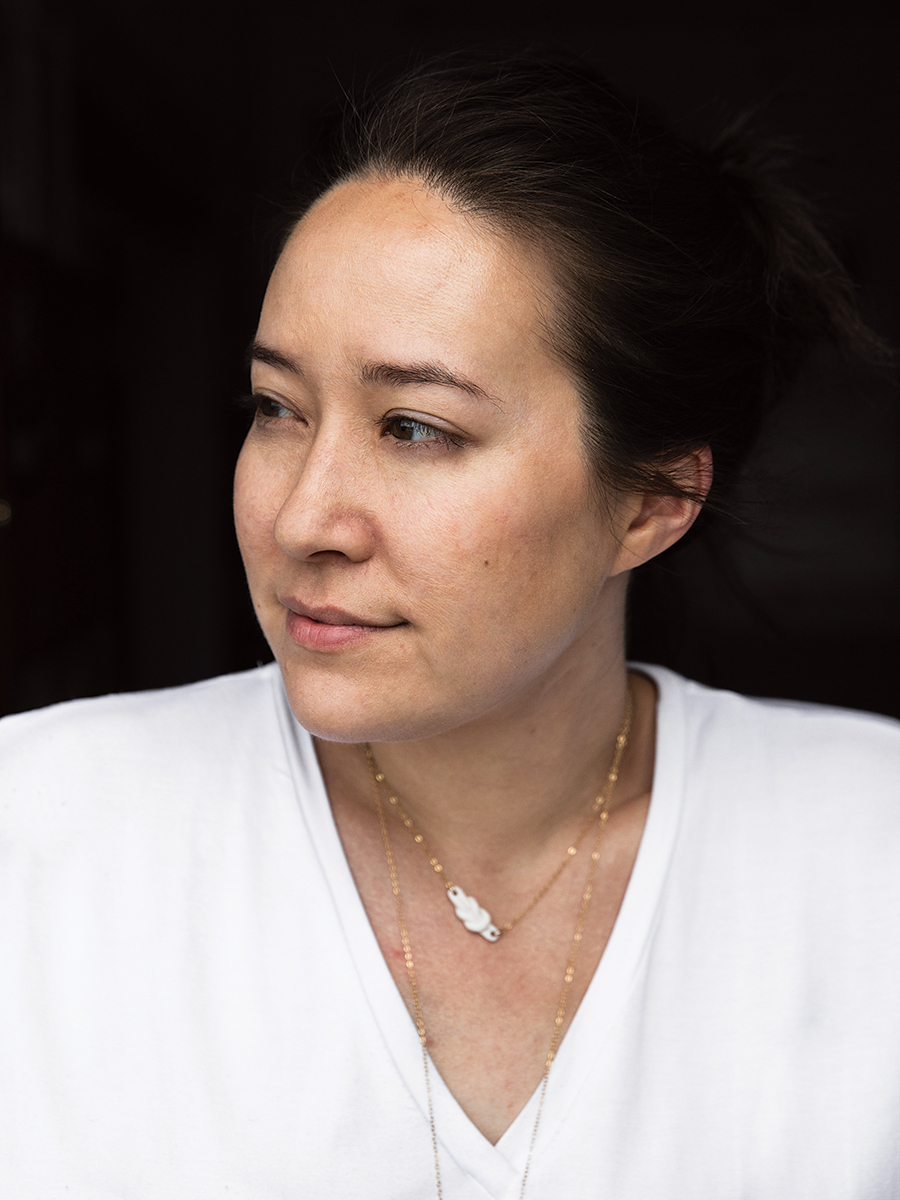A Peek into Porcelain and Stone’s Somerville Workspace
Kimberly Huestis creates porcelain jewelry inspired by the ocean.

Kimberly Huestis in her Somerville workspace. / Photograph by Greta Rybus
Kimberly Huestis wants you to know that porcelain is anything but delicate—and believe her, she’s tried her best to break it. “Porcelain is not unlike a sapphire or a diamond: It can last forever,” says Huestis, who often tests the material by dropping it onto a wooden floor. “It’s very difficult to break a tiny piece of jewelry, especially when it’s the strength of a sapphire,” she says. For Huestis, understanding porcelain’s limits is crucial. As the maker behind the jewelry company Porcelain and Stone, she uses it to form her ocean-inspired pieces: gold-dipped pennant studs, crescent-wave-shaped necklaces, black-and-white marbled rings. A few items utilize gems such as diamond or turquoise (which cracks easily, for the record)—hence the “Stone”—but Huestis’s go-tos are gold and porcelain. And really, the latter isn’t as fragile as it looks. “Porcelain is the strongest ceramic body that you’re going to find,” she says.
Huestis’s affinity for porcelain developed organically. First, she likes how working with the material keeps her in touch with her roots. “Porcelain was really born in China and Japan,” she says. “I’m half Taiwanese, and so I wanted to work with porcelain because there’s a heritage aspect to it.” It also comes down to practicality: Huestis has a severe nickel allergy and reacts to most jewelry materials, but not clayware. Finally, the material is a lot harder to make than other ceramics, and Huestis likes to test herself. “I’m really just trying to design to what challenges me,” she says. The key to attaining porcelain’s signature look—so white it borders on translucent—is using only minimal filler materials. “[That] purity of body is very difficult to achieve,” the designer explains.
Skilled as she is, it took years for Huestis to consider herself a professional jeweler. Although she’d always loved art—making jewelry, sculptures, paintings, and sketches since childhood—she also held an interest in science. That led her to study architecture at MIT, after which she worked with several local firms. But the field didn’t feel quite right, so she switched gears and ended up working with the wholesale team at Taza Chocolate, making and selling jewelry on the side through Etsy. Finally, after some soul-searching (and prodding from her husband, Chester), Huestis transitioned to jewelry full time in 2012. “Chester was like, ‘What are you afraid of?’ And I was afraid of everything,” she says, laughing. “But I couldn’t be stopped.”
Now six years into her venture, Huestis can hang with the best of ceramicists. From her art-filled Somerville studio, the designer crafts pieces for customers and special commissions alike. Her work is carried by a handful of local retailers, including Olives & Grace and Magpie, and she once made a brooch for Madeleine Albright. When not filling orders, she’ll make whatever she feels like at the moment: a series of riverbed-inspired rings here, a few pairs of teardrop earrings there, and collections of buoy necklaces in between.
It can take Huestis anywhere from three days to a week to complete a piece. For her marbled line, she’ll roll together globs of black and white clay until she sees a pattern and a shape she likes. She’ll let the pieces sit out to dry for a day, then wipe them down with a watery sponge until they’re perfectly smooth and carve any last details, such as a divot for a barnacle. The carved pieces dry for another half-day or so before Huestis throws them into the kiln for a bisque firing (an initial eight-hour firing at a low temperature). Her marbled creations don’t need a glaze, she says, so once the bisque firing is over, they can go right back into the kiln for a final cook. By day three or four she’s adding gold accents—melting bits of 22-karat-gold to detail her dipped and highlighted pieces—and setting the finished ceramic.
While most of her line is nautical-inspired, Huestis’s pieces usually contain only subtle nods to coastal themes. What she really loves is texture—and the more of it, the better. “I don’t do as many literal pieces anymore,” she says. “I want my designs to be more [abstract].” That means lava-like earrings meant to evoke tafoni (a honeycomb-esque pattern of weathering that can occur in granular rocks) or a hammered-brass necklace with an aqua patina that mimics the Caribbean Sea. But in Huestis’s world, design ideas come and go like the tides.“I try to stay agile,” she says. “I can always move on to something new.” Her one constant? Convincing the public that porcelain is made to last. “They’re going to dig me up one day and pull this jewelry off my corpse,” she jokes. “They’ll be like, ‘Ooh, is that porcelain? It must be, because that turquoise is cracked!’”

Kimberly Huestis uses a jeweler’s saw to trim a custom bezel setting. / Photo by Greta Rybus

Recently, the designer has been making tableware and practicing kintsugi-style repairs (inspired by the traditional Japanese art of filling pottery cracks with gold or lacquer) on friends’ broken pottery. / Photo by Greta Rybus

“I want to make things that look factory-perfect,” Huestis says, “which probably sounds weird, but I don’t want my jewelry to look handmade. I want it to look master-made by someone who’s been doing this for centuries.” / Photo by Greta Rybus

From cool blue hues to clusters of barnacles, Huestis says she’s always found inspiration in the sea and its inhabitants. / Photo by Greta Rybus

“Jewelry should make people feel either beautiful or happy, or proud,” the designer says. / Photo by Greta Rybus


